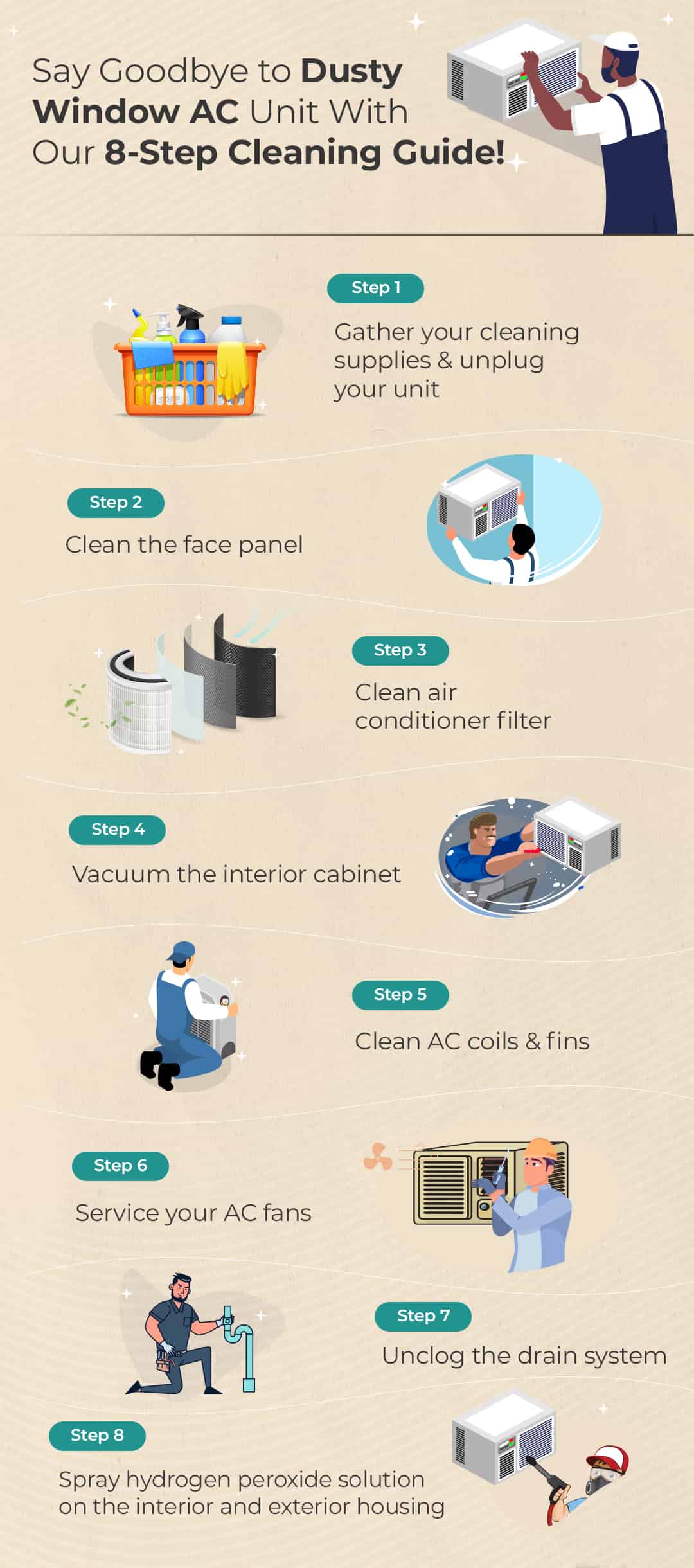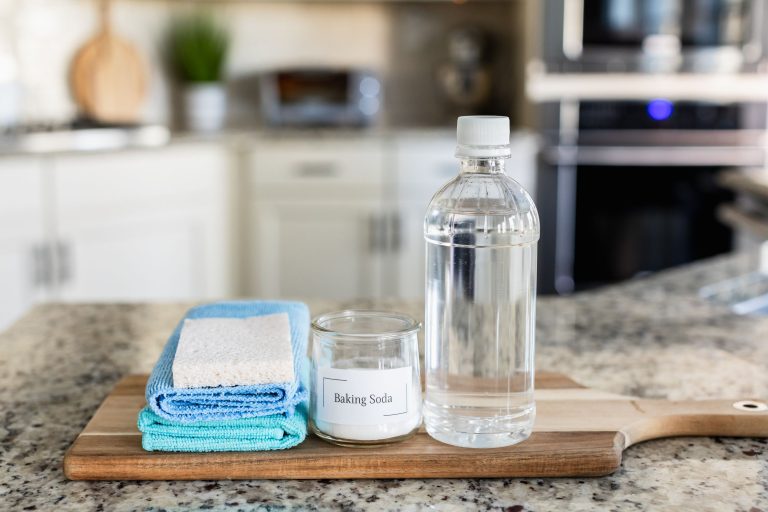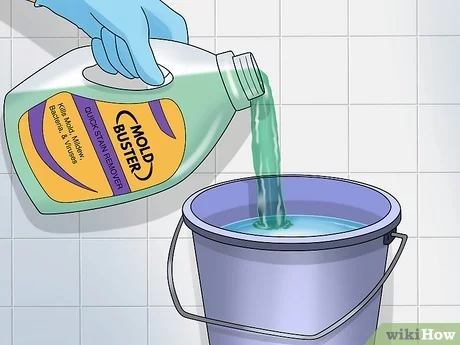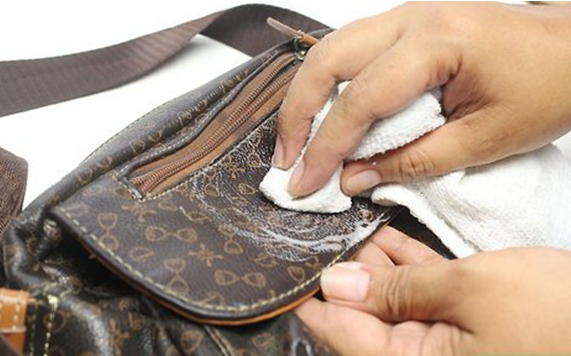How to Eliminate Mold in Your AC Unit: Ultimate Guide
To clean mold from an AC unit, first turn off the unit and unplug it. Then, mix equal parts water and vinegar in a spray bottle and spray the moldy areas.
Next, scrub the mold away using a brush or cloth. Finally, rinse the unit with clean water and allow it to dry completely before turning it back on. Regularly clean and maintain your AC unit to prevent mold growth and ensure efficient operation.
Taking these steps will help keep your AC unit clean and mold-free. Your well-being and the longevity of your AC unit will benefit from maintaining a mold-free environment.
Finding The Mold
Discovering mold in your AC unit can be alarming, but cleaning it is essential for your health. Start by turning off the unit and removing any visible mold. Use a vinegar solution to clean the affected areas and replace any filters to prevent mold growth.
Regular maintenance is key to keeping mold at bay.
Visible Signs
Mold growth can be visible on the surface of your AC unit, indicating the need for immediate action. Look for any dark patches, discoloration, or fuzzy growth on the unit’s vents, filters, coils, or any other accessible areas. These visible signs serve as strong indicators of mold presence and should not be ignored.
Musty Odor
In addition to the visible signs, a musty odor is another prominent indication of mold infestation in your AC unit. If you notice an unpleasant smell when you turn on the air conditioning, it’s essential to investigate further. The pungent, musty smell could be a result of mold growth within the AC unit, which requires your attention without delay.
When dealing with mold in your AC unit, it’s crucial to address the issue promptly to prevent further damage and potential health risks. If you come across any visible signs or notice a musty odor, it’s time to roll up your sleeves and tackle the problem head-on.
Remember, mold can pose serious health hazards, such as respiratory issues, allergies, and even asthma attacks. By promptly identifying mold growth within your AC unit, you can ensure a clean and healthy environment for yourself and your loved ones.

Credit: makeitright.ca
Preventive Measures
Looking to clean mold from your AC unit? Take preventive measures to ensure a mold-free environment. Follow these easy steps to keep your AC unit clean and functioning efficiently.
Preventing mold from growing in your AC unit is crucial for maintaining a healthy and efficient cooling system. By taking some simple preventive measures, you can ensure that your AC unit remains mold-free.
Regular Maintenance
Regular maintenance is the key to preventing mold growth in your AC unit. Follow these steps to keep your unit clean and mold-free:
- Regularly inspect the unit for any signs of mold, such as musty odors or visible growth.
- Clean or replace your air filters every 1-3 months, as dirty filters can harbor mold spores.
- Keep the area around your AC unit clean and free from debris to prevent mold from entering the system.
- Ensure that all drainage pans and tubes are clear and free from blockages.
- Regularly clean the evaporator coils using a mild detergent and warm water.
Proper Ventilation
Proper ventilation is essential for preventing the buildup of moisture, which can lead to mold growth. Follow these guidelines to ensure adequate ventilation:
- Open windows and doors to allow fresh air to circulate throughout your home.
- Use exhaust fans in kitchens and bathrooms to remove excess humidity.
- Avoid blocking vents and air registers to allow for proper airflow.
- Consider using a dehumidifier in areas with high humidity to control moisture levels.
- Ensure that your home is adequately insulated to prevent condensation from forming on walls and ceilings.
By following these preventive measures and practicing regular maintenance, you can keep your AC unit clean and mold-free. This will not only improve the air quality in your home but also prolong the lifespan of your cooling system. Remember, prevention is always better than cure when it comes to mold in your AC unit.
Cleaning The Ac Unit
To keep your AC unit running efficiently and prevent potential health risks, it is crucial to clean the AC unit regularly. Mold and mildew can quickly accumulate in the unit, reducing its performance and contaminating the air. Cleaning the AC unit is not only essential for maintaining a comfortable indoor environment but also for ensuring the longevity of your cooling system. In this section, we will guide you through the process of cleaning the AC unit, providing step-by-step instructions and the necessary supplies.
Gathering Supplies
Before beginning the cleaning process, it’s important to gather the necessary supplies to ensure a thorough job. Here’s a list of items you’ll need:
- Bleach
- Water
- Protective gloves
- Face mask
- Soft brush or cloth
- Screwdriver
It’s important to wear protective gear such as gloves and a face mask to avoid direct contact with mold and mildew during the cleaning process.
Steps For Cleaning
Once you have gathered the essential supplies, you can proceed with cleaning the AC unit using the following steps:
- Turn off the AC unit and unplug it from the power source to ensure safety during the cleaning process.
- Remove the front cover and filter from the unit. Use a screwdriver if necessary to access these components.
- Mix a solution of 1 part bleach to 16 parts water in a container.
- Dip a soft brush or cloth into the bleach solution and carefully clean the interior surfaces of the AC unit, paying particular attention to areas prone to mold growth such as the coils and drainage pan.
- Allow the cleaning solution to sit for 10-15 minutes to ensure thorough disinfection.
- Rinse the interior surfaces with clean water to remove any residue of the cleaning solution.
- Wipe down all components with a dry cloth and allow them to air dry completely before reassembling the unit.
- Once the components are dry, reattach the filter and front cover, and plug the unit back into the power source.
By following these steps, you can effectively eliminate mold and mildew buildup from your AC unit, ensuring cleaner air and optimal performance.
Professional Help
When it comes to cleaning mold from your AC unit, sometimes it’s best to leave it to the professionals. Mold removal can be a tricky and potentially dangerous task, requiring specialized knowledge and equipment. If you have a severe mold problem or if you’re unsure about the extent of the contamination, it’s advisable to call in the experts. Here are a few situations in which you should consider seeking professional help:
When To Call
- If you notice a strong musty odor coming from your AC unit, it could be a sign of mold growth. Mold emits an unpleasant smell, indicating that there may be mold present in the system.
- Visible mold growth on the air vents or inside the AC unit is a clear indication that professional intervention is required. Mold can spread quickly and cause health issues if not properly addressed.
- If you or anyone in your household is experiencing persistent allergy symptoms such as sneezing, coughing, or wheezing, mold in your AC unit may be the culprit. In this case, it’s important to have the problem assessed by professionals who can identify and eliminate the mold.
- For individuals with weakened immune systems or respiratory conditions, such as asthma, it is crucial to rely on professionals to handle the mold removal process. Mold exposure can worsen these conditions and pose serious health risks.
Finding The Right Service
When seeking professional mold remediation services, it’s essential to find the right company for the job. Here are a few key factors to consider:
- Experience: Look for a company with extensive experience in mold removal specifically from AC units. Mold remediation requires specific knowledge and techniques that not all companies may possess.
- Certification: Ensure that the company you choose is certified and follows industry standards for mold removal. This certification ensures that they have received proper training and have the necessary expertise to handle the job.
- Reviews and Recommendations: Read reviews and seek recommendations from friends or family who have had mold remediation services done. This will help you gauge the quality and reliability of the company.
- Price: While cost is an important factor, it should not be the sole determinant of your choice. It’s crucial to strike a balance between affordability and quality of service. Obtain quotes from multiple companies to compare and make an informed decision.
Remember, mold can be a serious problem and proper remediation is crucial to ensure a healthy living environment. When in doubt, it’s better to seek professional help rather than risk inadequate cleaning or potential health hazards. By finding the right service for your needs, you can confidently address the mold issue and breathe easy knowing your AC unit is clean and mold-free.
Maintaining A Mold-free Ac
Keeping your AC unit free from mold is essential for maintaining good indoor air quality and preventing health issues. Regular inspections and a few long-term strategies can help you keep your AC mold-free and ensure a clean and healthy home environment.
Long-term Strategies
Implementing these long-term strategies can significantly reduce the risk of mold growth in your AC unit:
- Keep the area around your AC unit clean and free from debris and vegetation that can trap moisture.
- Ensure proper insulation and ventilation in your home to prevent excess moisture buildup.
- Control humidity levels with the help of dehumidifiers or by using your AC in dry mode.
- Regularly clean and replace the air filters in your AC unit to improve airflow and prevent mold growth.
- Consider installing UV lights in your AC system to kill mold spores before they enter your home.
Regular Inspections
Regular inspections are crucial for identifying and preventing mold growth in your AC unit. Here’s what to look out for during inspections:
- Check for any visible signs of mold on the AC unit, such as black or green patches.
- Inspect the air ducts for any signs of moisture, leaks, or mold growth.
- Examine the condensation drain line to ensure it’s clear of any blockages or debris.
- Inspect the evaporator coils for dirt or debris accumulation, as this can contribute to mold growth.
- Ensure that the overall airflow from the AC unit is strong and consistent.
By incorporating these long-term strategies and conducting regular inspections, you can maintain a mold-free AC unit and enjoy clean, fresh air in your home. Remember, prevention is key when it comes to avoiding the growth of mold in your AC system!

Credit: www.brinkincmt.com

Credit: beckettus.com
Frequently Asked Questions For How To Clean Mold From Ac Unit
How Does Mold Form In Ac Units?
Mold forms in AC units when moisture gets trapped, providing an ideal breeding ground for mold spores. This can occur due to high humidity, condensation, and improper maintenance.
Why Is It Important To Clean Mold From Ac Units?
It is important to clean mold from AC units as mold can cause health issues such as allergies, respiratory problems, and infections. Additionally, mold can spread to other areas of the home and damage the AC unit if left untreated.
How Can I Clean Mold From My Ac Unit?
To clean mold from your AC unit, start by turning off the unit and removing any debris. Then, use a mixture of bleach and water to clean the moldy areas, ensuring to wear protective gear. Finally, let the unit dry completely before turning it back on.
Are There Any Natural Remedies To Clean Mold From Ac Units?
Yes, there are natural remedies to clean mold from AC units. Vinegar, hydrogen peroxide, and baking soda are all effective in killing mold. Mix one of these solutions with water, apply it to the moldy areas, and let it sit for a few minutes before wiping clean.
Conclusion
Keeping your AC unit clean and mold-free is essential for maintaining air quality and efficiency. By following the outlined steps and incorporating regular maintenance, you can ensure a healthy and well-functioning system. Prioritize cleanliness to protect your family and prolong the lifespan of your AC unit.







